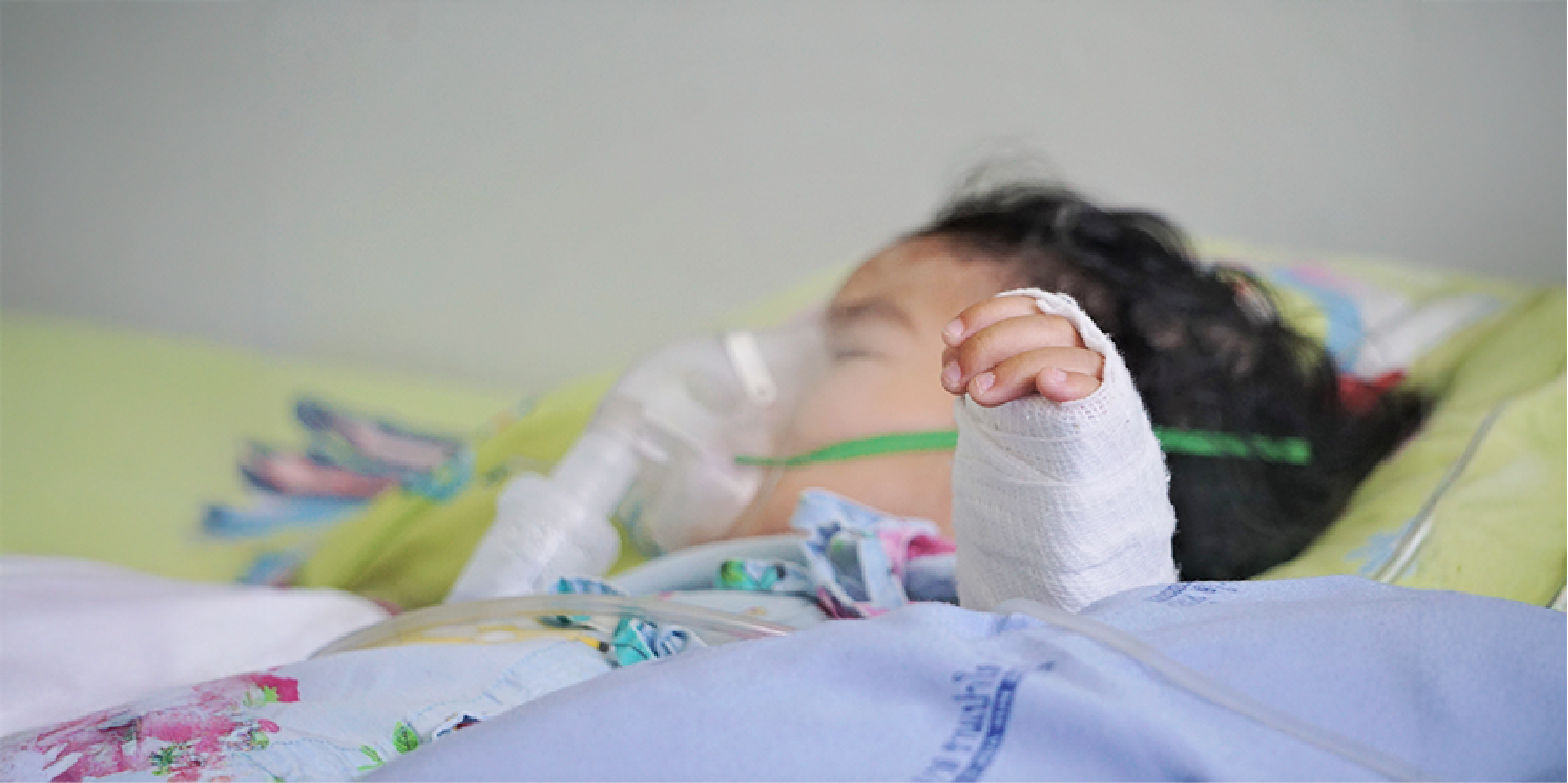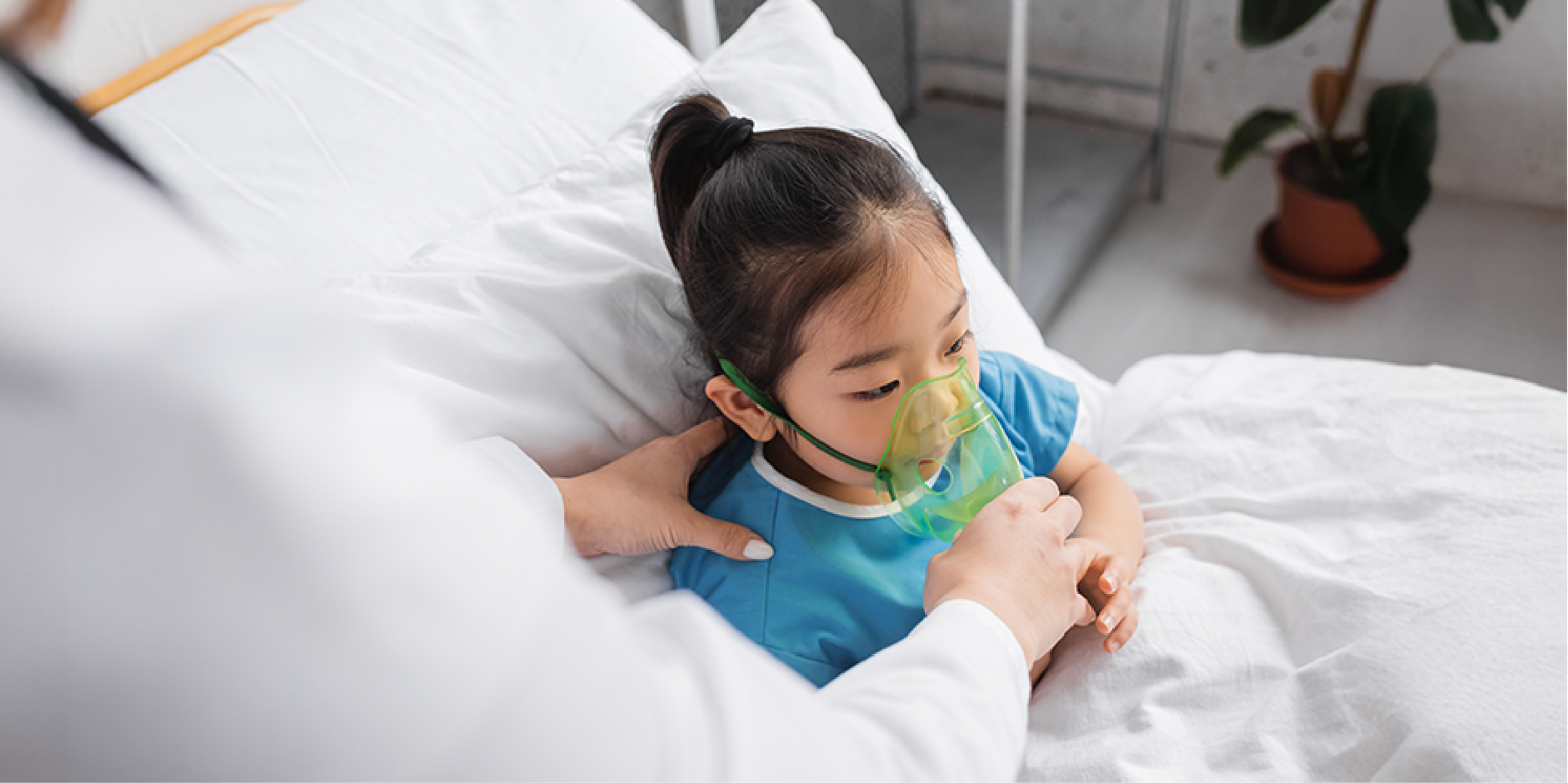Content on this page:
Content on this page:
Evaluation
Clinical Decision
Indications for Hospitalization
- Apnea, cyanosis, hypoxia, severe dyspnea, moderate to severe chest retractions, nasal flaring, grunting
- Infants
at high risk of respiratory distress:
- History of prematurity
- With congenital heart disease
- With chronic lung disease
- With underlying immunodeficiency or neuromuscular disorders
- Younger than 3 months of age
- With Down syndrome
- Infants with arterial oxygen saturation (SaO2) <92%
- Dehydration
- Age <4 to 6 months
- Poor feeding or inadequate oral fluid intake
- Lethargy
Pharmacological therapy
Pharmacological therapy depends on the underlying etiology of the
disease.
Inhaled Bronchodilator
Inhaled bronchodilator may be considered in
patients with strong family history of allergy, atopy, or asthma. There is no
definite evidence to support their routine use. It is not recommended for
patients <6 months old. However, it may produce modest short-term
improvement in clinical features. A trial may be considered with further
therapy based on the presence of a documented clinical response in a particular
patient (ie improved wheezing, respiratory rate, respiratory effort, SaO2).
It should be discontinued if there is no significant improvement within 15 to
30 minutes after trial inhalation therapy.
Epinephrine
Epinephrine is no longer considered a treatment option for infants and
children with bronchiolitis. Several studies have concluded that use of
nebulized Epinephrine is not beneficial and does not improve the length of stay
of hospitalized pediatric patients when compared to Salbutamol and placebo.
Ipratropium
Ipratropium is not recommended but may be considered as trial treatment
for the symptoms of acute bronchiolitis in an emergency setting. It is
discontinued if there is no treatment response.
Salbutamol/Albuterol
Salbutamol/Albutarol is not recommended in infants and children
diagnosed with bronchiolitis. The adverse effects in studies outweigh the
benefits of administration of Albuterol in infants with bronchiolitis.
Nebulized Saline Solution
Nebulized saline solution is recommended for
admitted patients, to be nebulized alone or with bronchodilators, in repeated
doses. Some studies show a decrease in the length of hospital stay. It should
not be given in emergency room settings.
 Bronchiolitis_Management 1
Bronchiolitis_Management 1Ribavirin
Ribavirin is an antiviral agent specific to RSV. However, there is no convincing evidence that the drug decreases mortality or the length of hospital stay. It is rarely indicated except in certain patients with severe immunodeficiency, when unrestricted replication of the causative virus may result in severe disease. It is given by small-particle aerosol for 3 to 5 days.
Xanthines
Xanthines may be considered for the treatment of apnea in ex-premature infants with acute bronchiolitis. It should be given by an intravenous (IV) drip.
Other Medications
Antibiotics should only be used in patients with radiologic and hematologic (blood count, C-reactive protein [CRP], procalcitonin [PCT]) evidence of bacterial infection. Its use is considered in patients with severe acute bronchiolitis requiring mechanical ventilation.
Regarding corticosteroids (systemic or inhalation), they have no evidence of benefit and should not be used for routine management. Antihistamines are also not recommended for routine treatment. Oral decongestants and nasal vasoconstrictors are not recommended for routine treatment as well. However, they can be used in the presence of severe nasal congestion and rhinorrhea. For example, young infants are obligate nose breathers and will not be able to breathe in the presence of nasal congestion.
Nonpharmacological
Parental Education
Parents are educated in basic pathophysiology and expected clinical
course of bronchiolitis. They are also educated in proper suctioning and airway
maintenance techniques. Other respiratory care therapies (eg chest
physiotherapy, cool mist therapy and aerosol therapy) are generally not helpful
and therefore not recommended. Deep and improper suctioning has been associated
with longer hospital stay. Information is provided on signs of progressing
disease which would necessitate calling healthcare providers including increase
in respiratory rate and accessory muscle use for respiration, worsening general
appearance, and inability to maintain an acceptable hydration status. Propping
up the patient at an angle of 10 to 30 degrees may ease breathing difficulty.
Lastly, parents are informed that symptoms of bronchiolitis (eg cough) usually resolve
within 3 weeks from diagnosis.
Hydration and Nutrition Therapy
It
must be noted that bronchiolitis patients usually feed poorly and are
dehydrated. If the patient only has mild to moderate respiratory distress,
small frequent feedings may be attempted. Nasogastric tube feeding may be tried
in patients who refuse to feed or have difficulty sucking due to tachypnea.
This may be employed to decompress the dilated stomach. IV fluids are administered
to infants with severe respiratory distress, cyanosis, and apnea. For patients
with swallowing difficulties, feeds should be mashed or thickened prior to
feeding.
Supplemental Oxygen (O2)
It
must be noted that adequate oxygenation is achieved at a SaO2 between
92-94%. Supplemental humidified O2 should be started when the SaO2
is consistently <90%, with signs of hypoxia, increased work of
breathing, and/or increased fatigue with feeding. One may choose not to
administer supplemental O2 if the child’s SaO2 is
>90%. SaO2 should be maintained at ≥95% in patients with moderate
symptoms of bronchiolitis and >95% in patients with severe symptoms or signs
of bronchiolitis. Respiratory failure may be imminent when SaO2
remains low despite inspired O2 level of >40% or when CO2
levels are rising. Weaning off O2 supplementation may be considered
when SaO2 is consistently >94%. The patient is observed for at least 4 hours
after cessation of O2 supplementation.
 Bronchiolitis_Management 2
Bronchiolitis_Management 2Non-Invasive Ventilation
Non-invasive ventilation is considered for patients with progressive breathing difficulties despite pharmacological treatment. Continuous positive airway pressure (CPAP) is recommended for acute bronchiolitis patients with severe respiratory difficulties, hypercapnia or recurrent apnea. Mechanical ventilation should be considered if symptoms worsen even with non-invasive ventilation and signs of possible respiratory arrest are present. High frequency oscillatory ventilation (HFOV) may be considered if a patient worsens even with mechanical ventilation and pharmacological treatment.
